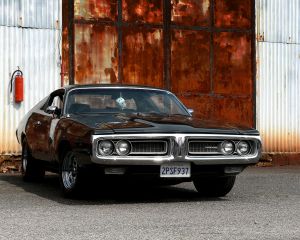 If one has to define ‘muscle cars’, the most common one would be mid-size American cars that are rear wheel drive and are powered by V8 engines. In other words, it’s very simply a small car that has a big engine in it.
If one has to define ‘muscle cars’, the most common one would be mid-size American cars that are rear wheel drive and are powered by V8 engines. In other words, it’s very simply a small car that has a big engine in it.
However, one thing is for sure, they were definitely designed for straight line speed alright with anything but the engineering integrity of the-then high-performance European cars. Even till this day, both enthusiasts and experts are divided as to whether pony cars, compacts or even high performance full-sized cars belong to this category.
Yet history is very clear about the 1949 Oldsmobile Rocket 88 being the first of its very kind, with the Hudson Hornet being the only mid-sized car that could give it a run for its money when it came to its performance potential.
In the 1950s, Chrysler held the title of “America’s Most Powerful Car” with its 1955 C-300, and which was capable of accelerating from zero to sixty miles per hour in 9.8 seconds. With horsepower touching almost 300, it became the new star of NASCAR until the Rambler Rebel took its place.
The 1960s saw a surge in muscle car models and with the 1970s seeing cars offering at least horsepower of almost 450 and above. But with this came the decline as the automotive safety lobby made sure that most of these ‘muscle cars’ were out of reach, thanks to the expenses involved in owning one of these “beauties”.
Of course, with the Dodge Challenger, Chevrolet Camaro and Ford Mustang leading the way these days, the power that was the hallmark of muscle cars have now been combined with safety, fuel economy, handling and reliability that was not present in older versions.